It’s like the love-child of those fun 80s portable keyboards and Vocaloid. A new Casiotone keyboard will sing lyrics for you. It’s a singing robot keyboard with Bossa Nova. At last – peak Japanese music electronics are back, baby.
Casio teased a new synth a few days ago, and it seemed like what they had was something with a conventional vocoder. That wouldn’t have been all that exciting, since it’s well covered in instruments from the likes of KORG and Roland.
But for the first time in a while, Casio has something novel and joyful up their sleeves. It’s a keyboard you can make sing lyrics as you play. Now that’s the good kind of weird.
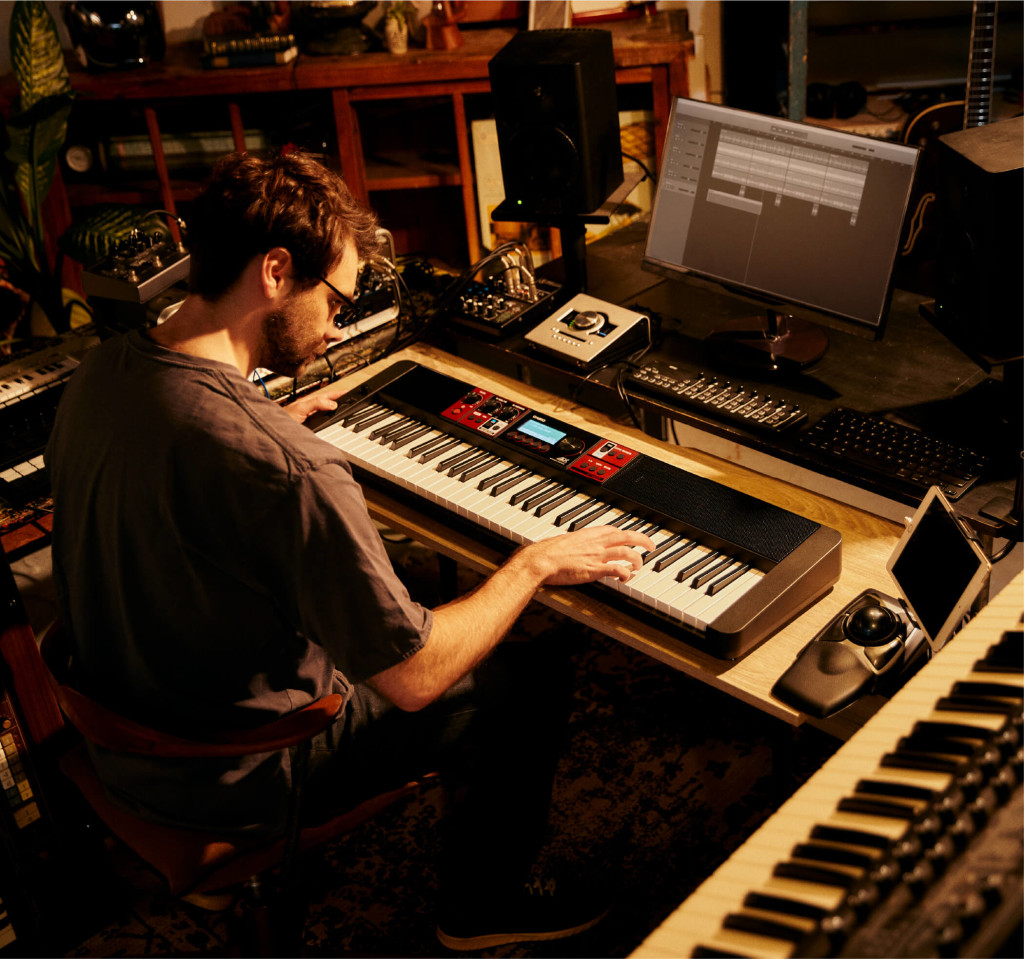
It’s also worth saying – this isn’t normally an easy thing to do. Vocaloid, the best-known synthetic singer, is an amazing product, and remains just about the best option available. (It’s worth another look soon.) But all that nuance involves a fair amount of detailed work to make English and Japanese lyrics sound their best. Plus Vocaloid’s UI really built for software operation, not jamming onstage or playing for beginners – and the cost of the software (plus voice packs) is at a pro price point, too. (See also EastWest’s Word Builder approach, especially for sampled choral writing.)
What Casio has done is create a nice compromise that simplifies lyric entry and performance – you really can just play the vocal part you want – and put it in a compact, very affordable package. (You can pick up one of these entire keyboards for just a little more than the plug-in and voice bank route.)
It’s built on what they call “lyric tones” – 100 of them are built-in, with up to 150 user banks. That’s an order of magnitude reduced from what Vocaloid does, but that’s also sort of the point – this looks more like a fun, easy-to-play toy in the best sense.
You enter the lyrics you want on your “smart device” (think iPhone, Android smartphone, iPad), in English or Japanese, and then play. The other twist here is AI – Casio says machine-learning human voice data helps match lyrical phrases to your playing more naturally.
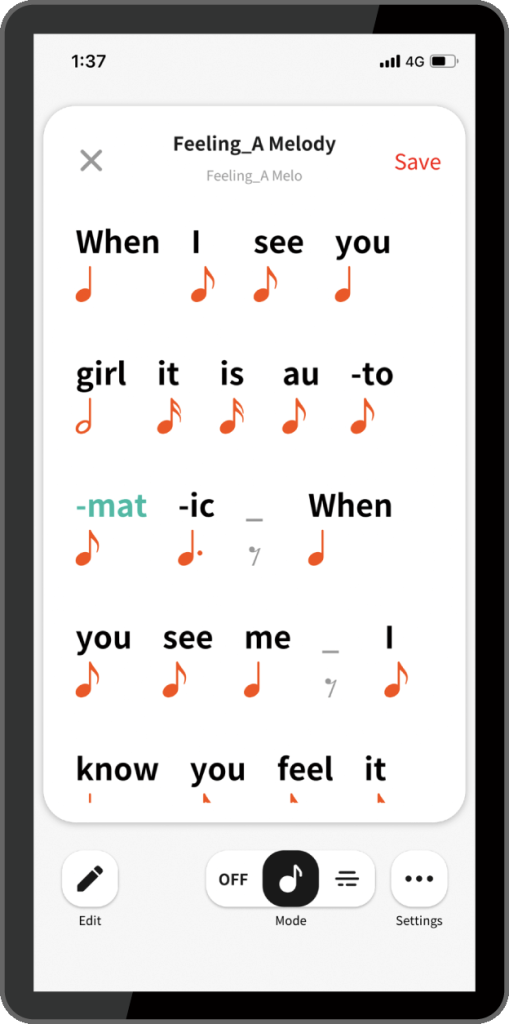
The lyric phrases are then fed into a “vocalist” that models human vocal cords and formant filter. That part produces more realistic results than its predecessors, but certainly can trace its lineage back to the original Voder/vocoder nearly a century ago.
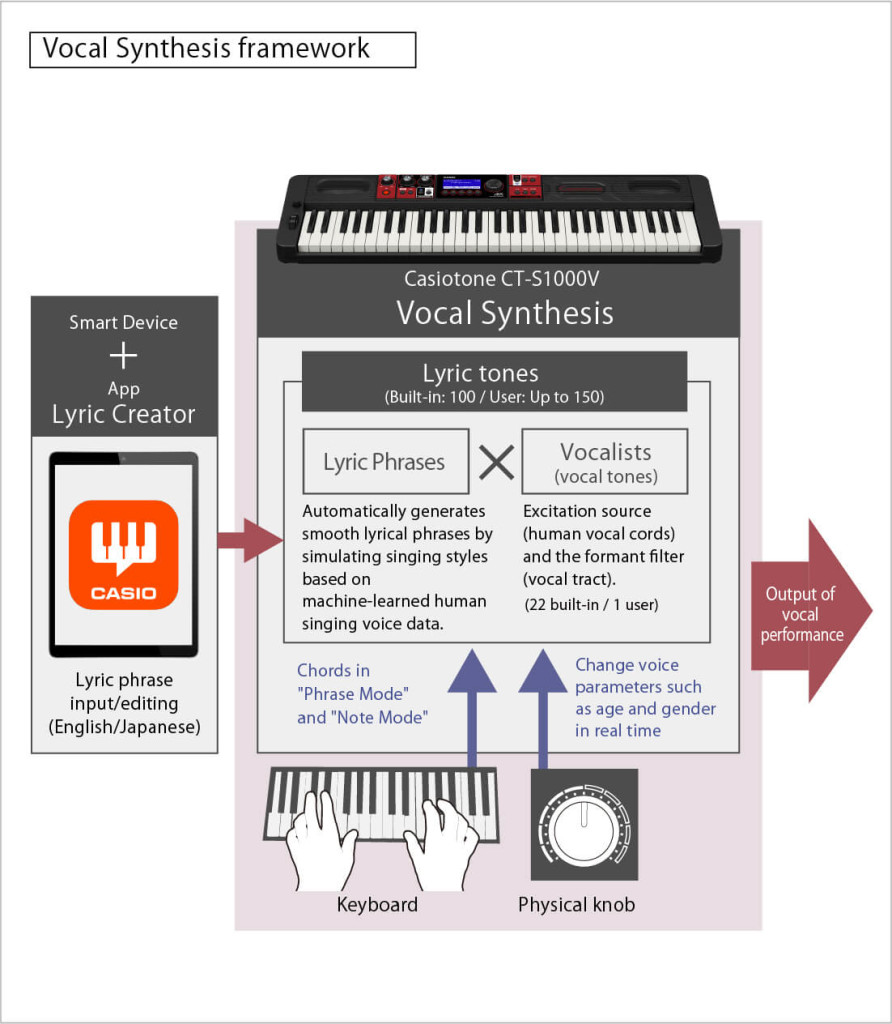
How much is this a classic Casio / Casiotone product? There’s a Bossa Nova setting. And you can use your own full-quality WAV-based User Vocalists with those user parameters, making it ripe for experimentation – just like classics like the SK-1 sampling keyboards.
As Synthtopia notes, Casio introduced two keyboards this week – the CT-S500 portable and CT-S1000V. The disappointing news is that only the bigger of these has voice synthesis. That’s too bad – I would have loved a battery-powered keyboard with this feature, even if the feature set were restricted a bit. So the CT-S500 is just a conventional Casiotone. It’s the CT-S1000V that’s the one you want
Casio dubs the whole thing not-very-creatively “Vocal Synthesis.” Hey, come on, Casio! Haven’t you heard all the names Yamaha and Roland come up for stuff? It should have an acronym! There should be a random word that doesn’t seem to have anything to do with the process! I don’t know, let’s see — ARTIFICIAL – eXtended – SPIRIT – Voicing, AXSVox!) Edit – I wrote this before I remembered that this very keyboard already has something called AiX on it.
But, while it doesn’t have its own strange name and logo, you can read about the technology on the new Casiotone website.
Behind the Scenes Interview with the CT-S1 Development Team
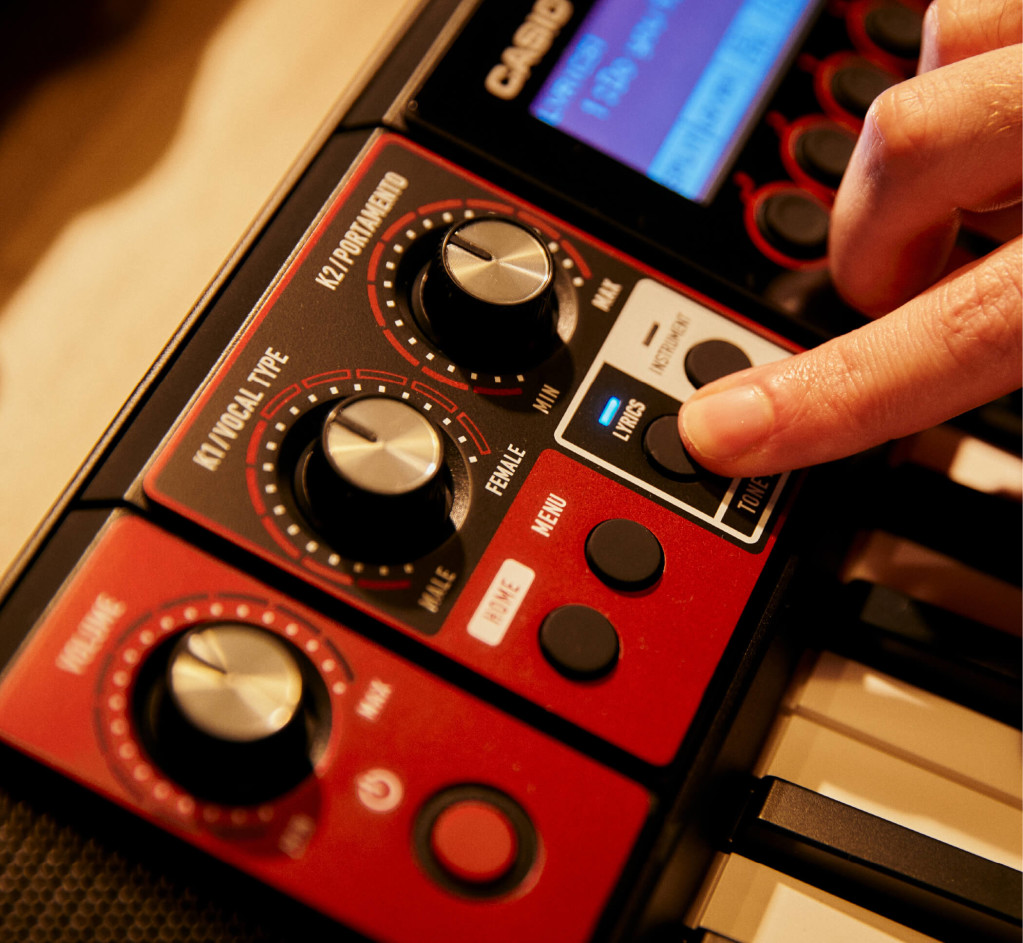
It sounds just synthetic enough to give it a beautifully retro-synthetic electro sound, but just natural enough to make it worth using this over just, you know, a vocoder. It’s expressive, but also wonderfully deep in the uncanny valley both with chorus and solo, where you want a synthetic voice to be. (Because otherwise you just find a singer.) And you should still consider a vocoder, to be sure, depending on what you want. But the straight-up oddness of this thing makes it unique.
It honestly seems like something out of sci-fi and anime in aesthetic, a combination of modern technique with the retro-sound of classic voice chips. (If you’re into that, stop reading this right now and download Plogue’s brilliant Alter/Ego plug-in if you don’t have it already. It’s even free. The paid Chipspeech is wonderful, too – see my write-up from a few years ago for some more history.)
It’s not so much the voice synthesis tech itself, which is more familiar, as it is the ability to harness machine learning to assist phrasing and to be able to easily play this thing on a piece of hardware. You can set it to either play each time you hit a note, or phrase notes automatically along with tempo – the latter being really quite impressive. You can also tweak knobs for gender and age, which is something I’d love to be able to just dial in every morning myself.
They have a picture of how playing works:
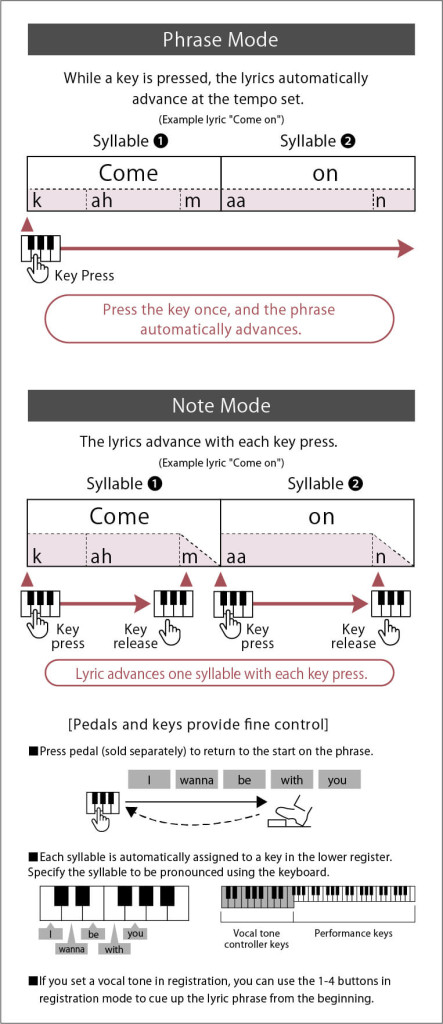
I do hope it’s something software developers pick up, too. But meanwhile, it’s just terrific that this thing ships as hardware at a price that might make bands or producers jump for it. And after years of saying I wished Casio would do a throwback to some of their old Casiotone magic, this is actually better. It’s the spirit of those 80s inventions, but it’s not a remake. (And the old Casio gear is so cheap used anyway, you barely need a reissue.) It’s a new thing that seems like it has the soul of the old thing.
That’s genius. Our 80s selves would have loved this, too, I imagine. I absolutely will try to get one for review. And Casio – it’s seriously good to have you back.
Specs:
- Custom lyrics with Lyric Creator for iOS, Android
- 22 vocalist types, with talkboxes, choirs, robot voices, vocoders, and whispers
- Lyric sequencing
- Lyric phrasing, with or without legato
- 64-voice polyphony
- 800 high-res sounds (that’s the AiX tone source… uh, sure, why not call it that?)
- Included Bluetooth MIDI and audio adapter (cool)
- Onboard MIDI recording – five performances, six tracks each, 40,000 notes per song (plus more connectivity via USB and Bluetooth)
- 100 built-in DSP effects with adjustable parameters, including amp and cabinet simulators, chorus, reverb, delay, and modulation, in lots of flavors
- 243 built-in rhythms, 50 user-programmable rhythms, yes it has Bossa Nova
- On-the-fly arranging
Anyway, when you see me busking at Warschauer Strasse this summer, you’ll know I just went all-in.
https://music.casio.com/en/products/casiotone/cts1000v/
Street price: US$450 according to Synthtopia. See:
Also – OMG.